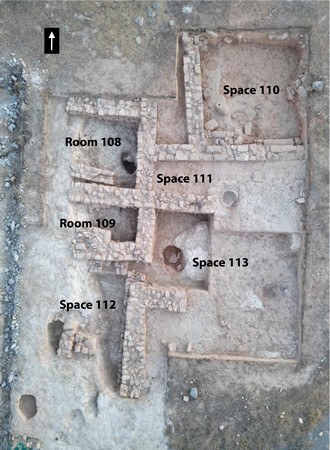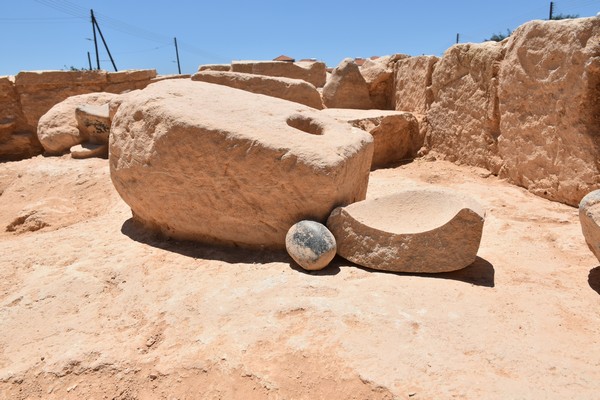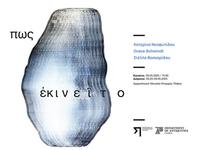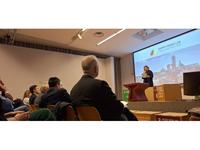Press Releases
01-07-2024 15:26
Announcement by the Department of Antiquities on the completion of the 2024 fieldwork season at Erimi-Pitharka
Director: Prof. Laerke Recht, University of Graz
The Department of Antiquities, Deputy Ministry of Culture, announces the completion of the 2024 fieldwork season at Erimi-Pitharka, that took place between 29 April to 7 June 2024. The excavations were carried out by an international team of staff and students, directed by Prof. Laerke Recht.
The Erimi Pitharka Archaeological Project is run by the University of Graz, in collaboration with Cardinal Stefan Wyszynski University, Warsaw (co-director Dr Katarzyna Zeman-Wisniewska). The 2024 excavations were mainly funded by the University of Graz and a Rust Family Foundation Grant. Excavations took place in plots 1209 and 1210, where work was both continued in the eastern trenches opened in 2022 (Trenches 5 and 6), and where four new 5x5m trenches were opened (Trenches 9, 10, 11 and 12).
The area revealed an additional section of the large building complex discovered in earlier excavations by the Department of Antiquities in 2007-2012, and expanded in the new excavations since 2022. This section includes several rooms of various sizes and depths, along with open and semi-open spaces. As noticed elsewhere in this building, many of the spaces were constructed using a combination of cutting into the natural bedrock (kafkalla), drystone walls and upper mudbrick walls. All mudbrick walls have collapsed into the rooms, and the mudbrick itself is largely deteriorated, but many of the stone walls are still intact, and the cuts in the kafkalla can often still be identified.
The stone walls are generally 60-80cm wide and constructed using large stones for the outer faces and smaller stones for fill in between. They are usually well-constructed, some in fact of carefully cut stones, but others are less well-made and there is some evidence of attempts to repair and support walls.
Several spaces can be noted as particularly interesting: Space 110 is a very large room built with large cut stones. It includes a 1m wide threshold with a step into the room and a bench in the southwestern corner. In the room, on a partially preserved plaster floor, was a stone weight for an olive press and a range of grindstone tools. A crushed so-called Canaanite jar was also found in the room. The area south of this room, Space 113, is an open and semi-open courtyard, where another surface is partly preserved, in this case with a column base and a stone basin embedded in the surface.
The finds primarily consist of ceramics (with a predominance of Pithos and Plain White wares, along with coarse/cooking ware, and lower amounts of fine and imported wares) and worked stone tools and objects (grinding slabs, grinders, pestles, basins, gaming stones, mortars).
Based on the finds, Pitharka can be dated to the Late Bronze Age IIC-IIIA period, in accordance with previous findings. This is especially evidenced by the fine ware pottery, which includes Base Ring, White Slip, White Painted Wheelmade and Aegean-type wares. Below the colluvial soil and top cultural layer, the archaeological contexts are fairly secure, and there is little disturbance from later periods. The stratigraphy, architecture, features and surfaces demonstrate several phases at Pitharka, but these are so far all within the Late Bronze Age IIC-IIIA period. Pottery sherds do, however, point to an even earlier presence at the site.
Pitharka appears to have been peacefully abandoned: there is much collapse of walls, but no evidence of burnt destruction. Rooms and spaces have generally been emptied, with relatively few finds, mainly consisting of ceramic sherds and less mobile items, such as pithoi and groundstone tools, suggesting that the inhabitants had ample time to leave the site.
(MS/NGian)









